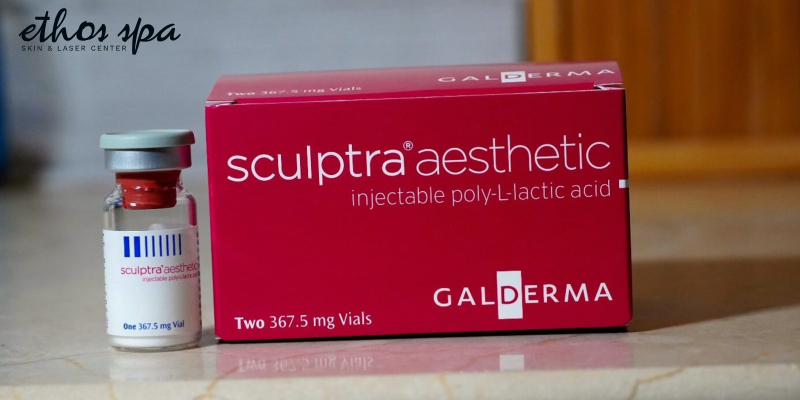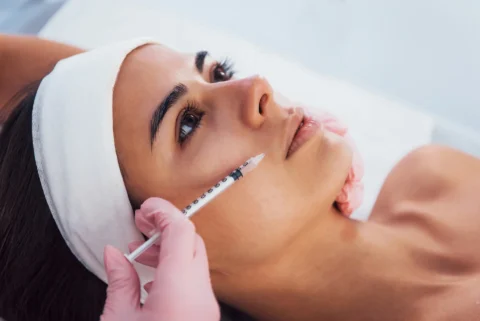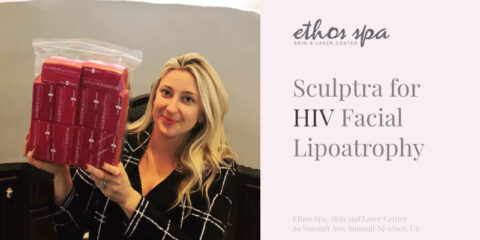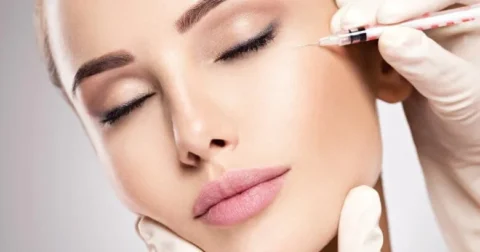According to the American Society of Plastic Surgeons, the United States performed 2.6 million dermal filler injections in 2018. Dermal fillers are arguably one of the most common cosmetic procedures done, but that’s because you need to reapply them to get the most out of their results. This drawback is why alternative fillers like Sculptra were created.
But does Sculptra work on everyone? It does, but the best results can only be achieved after time. While it takes a few more weeks for Sculptra to work in comparison to treatments like Botox, consistent treatments and patience will give far better results.
How Successful Are Sculptra Treatments?
Sculptra treatments are very successful once the body has acclimatized to the effects of the formula. Sculptra typically requires less maintenance and follow-up compared to cosmetic treatments like Botox or dermal fillers, since Sculptra functions differently.
Most dermal fillers use some form of hyaluronic acid (HA) as their primary ingredient. HA fills in gaps in your skin, increasing its water retention and making it smooth and supple. It works differently from Botox, which uses chemicals to freeze the neuroreceptors that cause facial wrinkles.
But as a poly-L-lactic acid, Sculptra works by stimulating collagen production. Collagen is the most abundant protein in your body, and is responsible for keeping your skin supple and healthy. This boosts your skin regenerative properties so it “grows” into fill areas.
The ideal Sculptra patient is typically someone who needs a lot of fillers around the cheeks and nasolabial area since the collagen-producing effects of Sculptra are more apparent in these areas. But that doesn’t limit other patients from getting some mileage out of this treatment – they’ll just have different considerations to keep in mind with their treatment.
Complications From Using Sculptra
But what are the risks of using Sculptra? Fortunately, there aren’t many. Since it works by slowly encouraging collagen production over time, any immediate side-effects are easily manageable, with most patients reporting little to no need for post-operative care.
Some of the most common after filler complications from Sculptra include:
1. Postoperative bumps
In very rare cases, bumps or nodules can appear after Sculptra treatments. These bumps are caused by either overcorrection (too much filler material was placed) or allergic reaction. The bumps can also be inflamed or discolored, depending on how strong of a reaction you have to it.
Some bumps can be non-visible unless closely examined or felt, which is why Sculptra patients need to report for post-operative care. Close monitoring of injection sites is the best way to detect these bumps.
These bumps break down in a few days or weeks, possibly even sooner if you massage the afflicted spots. One way to avoid them entirely is by having a skilled dermatologist, as they’re less likely to do over corrective injections and miss entire filler areas.
2. Inconsistent filler areas
Another rare complication from using Sculptra is inconsistent filler areas or areas of your face that are sunken or bulging from the rest. This tends to happen when your dermatologist isn’t used to injecting filler material or they’ve overestimated how much filler the injection site actually needs.
Inconsistent fillers areas will need a follow-up visit to correct, though it is possible to manage the symptoms at home at your doctor’s advice. Sometimes an inconsistent filler area will only appear to be sunken in because of the time it takes for Sculptra to work; if you’re not sure which case applies to you, consult your doctor.
3. Short-term and persistent pain and swelling
All dermal filler procedures come with post-operative pain and swelling, and Sculptra is no exception. However, it is possible to reduce the amount of pain and swelling via changes in the injection method and medication. Each person also has their own pain tolerance – if they’re conditioned to receiving dermal filler injections, they’re less likely to experience pain.
Either way, acute pain of any sort from Sculptra injection should never last more than a few days. As your body gets used to the additional filler material and the increased collagen production, you’ll find that your capacity for tolerating the procedure vastly improves.
Any complications from using Sculptra are quite mild, with very rare exceptions that require medical or surgical intervention. Most patients that undergo Sculptra treatments recover with little to no post-operative care required if treated by a skilled dermatologist.
How To Get The Most Out Of Sculptra
When done properly, the results of Sculptra treatments can last for two years or more, depending on the patient’s lifestyle and how much filler was applied. If you want to extend the effects of your Sculptra treatments (or build on them with other cosmetic procedures) here are some things you should do:
1. Schedule regular visits
Sculptra treatments are ideally done in 2 to 4 sessions to make sure that all the filler material gets injected in the right places, with a session or two of post-operative aftercare and monitoring. The crucial part here is to keep going to the sessions for as long as your dermatologist requires. Skipping out on any regular visits can mess up the collagen production of your skin, resulting in uneven areas.
Regular visits are also essential to check if your body displays an adverse reaction to Sculptra. While the risk of having an allergic reaction is almost none because the active ingredients (poly-L-lactic acid) is similar to the natural lactic acid found in your body, you can be allergic to other compounds used in the procedure.
If you experience any swelling, itchiness, or rashes, consult your dermatologist immediately.
2. Combination with other skin rejuvenation methods
For particularly severe cases that need filling – like acne scars, pockmarks, or crow’s feet – it’s possible to combine Sculptra treatments with procedures like micro-needling and dermabrasion.
While you should discuss the exact specifics of your treatment with your doctor, the collagen-producing properties of Sculptra treatments work very well in tandem with other skin rejuvenation therapies.
One thing to remember is that you should never attempt to combine Sculptra with other dermal fillers like Botox on your own. While it’s possible for you to get both treatments in a single visit, always leave the actual application to your dermatologist for the best result.
3. Wait for results
One defining characteristic of Sculptra is that it’s a treatment that takes time. You should never expect immediate results from a single Sculptra session. Most of the results don’t become apparent after the third or fourth session, and the full effects won’t be obvious a few months after treatments are finished.
The key to getting the most out of your Sculptra treatments is patience. Following your dermatologist’s advice and going for regular visits will only work if you can wait for the collagen to work on your skin. If you want more immediate results, you can combine Sculptra’s gradual filler with procedures like Botox.
Things To Consider Before You Get Sculptra
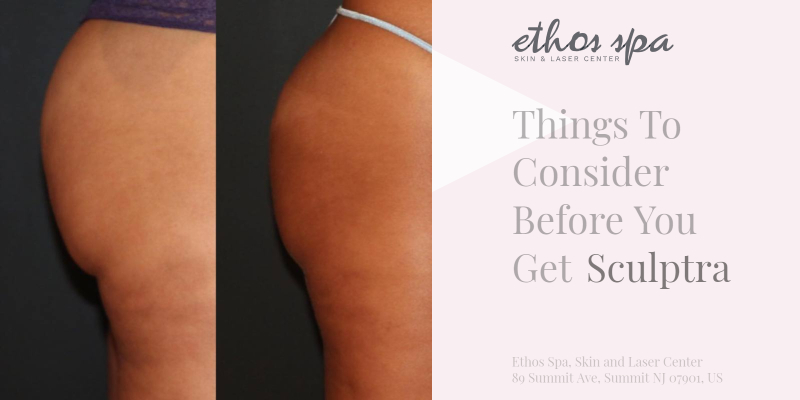
Here are several factors that may affect how well Sculptra will work for you:
1. Lifestyle and diet
Active and healthy people are more likely to find success with Sculptra since their natural reserves of collagen have fewer toxins and other compounds to work against. People who live a healthy lifestyle are also more likely to see the results of their Sculptra treatments earlier than other patients.
Diet is a key consideration in getting Sculptra. Pre and post-operation, avoiding fatty foods and medications like aspirin can help reduce the incidences of bruising or scarring. You can also discuss any other dietary restrictions with your dermatologist.
2. Age
While Sculptra is permitted for use on people 18 and above, it’s unlikely that you’ll see significant changes to your skin the younger you are. Most patients that get Sculptra are around their 30s or 40s since that’s the age that collagen production slows down.
3. Ethnicity
Ethnicity is a relatively minor factor, but it can play a role in how well your skin reacts to Sculptra treatments. People who are prone to keloids (most commonly found in people who have darker skin) should avoid Sculptra. While this doesn’t exclude darker-skinned people from getting Sculptra, dermatologists need to set expectations and carefully monitor the results after treatment is done to avoid complications.
4. The skill of the dermatologist
Even if Sculptra is a minimally invasive procedure, it’s still possible to get it wrong if it’s applied by an inexperienced dermatologist. Most healthcare professionals may not have knowledge about the body and facial anatomy to discern which areas need Sculptra treatment.
That’s why patients have to be extremely careful to choose a dermatologist or cosmetic practice that’s trained and licensed to conduct Sculptra treatments. Not only does this guarantee a safe and effective procedure, but it also opens new avenues for alternative application methods like blunt cannula injections.
Professional Body Sculpting Services With Ethos Spa NJ
Sculptra is an excellent semi-permanent alternative to most dermal filler injections, with lasting results that patients will love. The only consideration that patients and dermatologists need to keep in mind is that these results will take some time. While you can combine some cosmetic procedures with Sculptra, the full effect will only be seen once time has passed.
Ethos Spa is a leading provider of dermal filler injections and other body sculpting services in New Jersey. We have fully trained staff experienced with a variety of cosmetic procedures and pride ourselves on excellent customer service.
For more information about dermal fillers and other skin care treatments, schedule an appointment with us today.
Read more: What is the Difference Between Restylane and Restylane Lyft?

